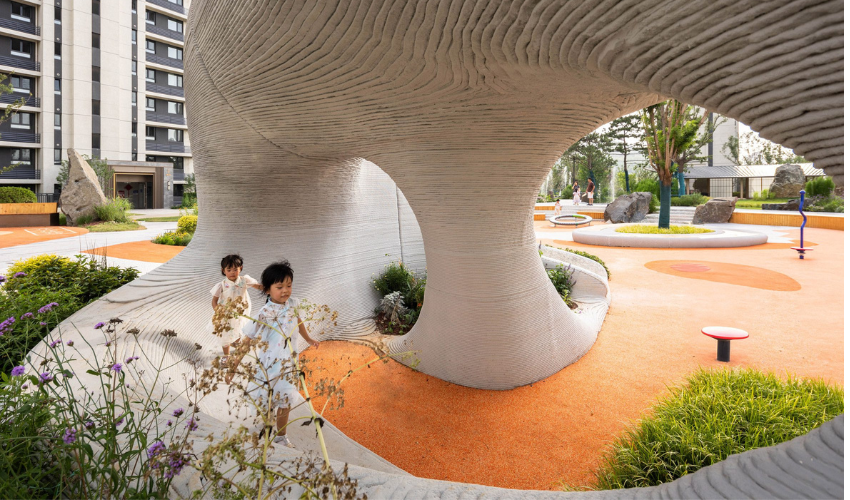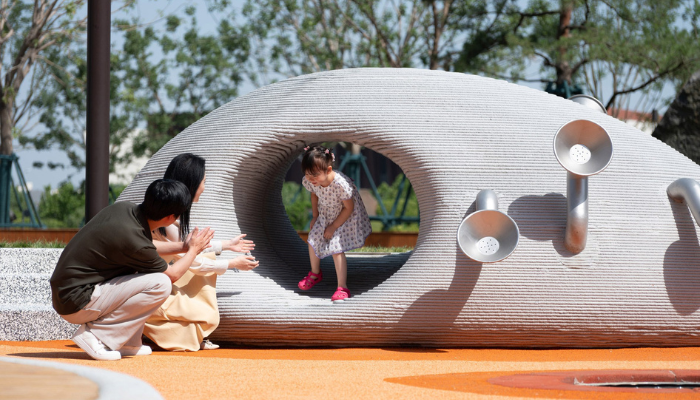Boulder Park in China Features 3D Printed Concrete Playscape

XISUI Design, a creative studio from Shanghai, just introduced a new public project that showcases how 3D printing can reshape public spaces with the opening of Boulder Park in Jinan, Shandong province. The new playscape relies on three large 3D printed concrete boulders that are not just visually aesthetic but also can be used as tunnels, slides, and climbing structures for children.
At the heart of the new 13,000-square-meter park, the boulder playground is one of the three themed areas designed by the studio. Their design team set out to merge the durability of concrete with organic qualities, such as natural stone. They used a 3D concrete printer with an adjustable robotic arm; the concrete was then extruded in layers to create a distinctive contoured form. The largest boulder contains both a cave-like shelter as well as an integrated slide platform, while the smaller boulders feature crawl tunnels and interactive details such as ear trumpets for children to explore.

What makes this project unique is how the 3D printed elements were utilized to allow for complex and naturalistic forms that would otherwise be costly and time-consuming. The technology enabled XISUI Design to create these structures that look organic yet are also engineered for safety and durability. Each installation was specifically designed with smooth surfaces and rounded edges. By applying additive manufacturing to landscape design, the project cleverly balances imagination, safety, and practicality.
For the company, this was not their first time experimenting with digitally fabricated landscapes. XISUI Design was behind a similar project called the Red Dunes, which was another playground located in Guangzhou. This previous project used concrete forms to create tunnels and caves. In the new Boulder Park development, the approach is much more direct, by utilizing the raw texture of 3D printed concrete to highlight how the technology can replicate and often reinterpret natural formations.

The end result is a community playscape that demonstrates how 3D printing can move beyond just architecture and infrastructure, but also into the design of outdoor experiences for children. As cities continue to seek more creative and cost-effective solutions for public spaces, Boulder Park showcases the role of additive manufacturing in shaping environments that are not only functional but also resilient.
What are your thoughts on 3D printing in parks? Let us know in a comment below or on our LinkedIn or Facebook pages! Plus, don’t forget to sign up for our free weekly Newsletter to get the latest 3D printing news straight to your inbox. You can also find all our videos on our YouTube channel.
*All Photo Credits: Hu Yihao and Zhou Sheng








The 3D concrete structures look Waaay Kooool !!! If I was still a kid, I’d LOVE to play in, on and around these structures. HOW does someone contact the appropriate company to get their services. I’m sure the Southern Oregon Parks and Recreation would be interested in adding these to its Parks !!
The innovative use of 3D printed concrete boulders at Boulder Park is fascinating. It’s impressive how XISUI Design combined aesthetics with functionality, creating a safe and durable playscape.